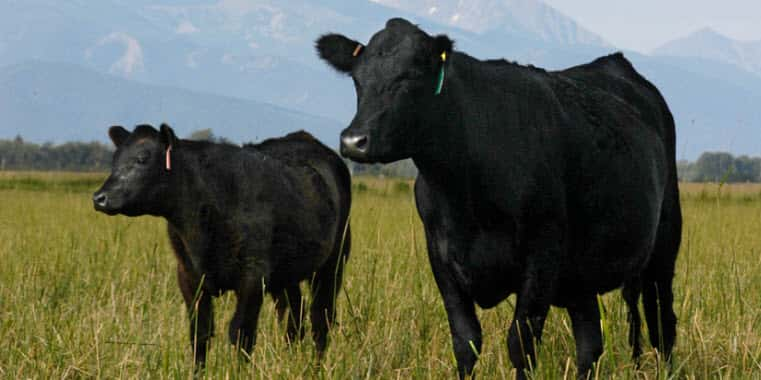This spring, when wholesale beef prices reached record levels and shelves at the meat counter began to look a little bare, consumer interest in locally raised meat began to take off. Many ranchers have been responding to that demand by holding back a few calves to market directly to consumers.
Cattle prices across the board have experienced a lot of volatility and have been under pressure since the start of the pandemic. Profitability has definitely been challenges in recent years and has only been squeezed further the past 6 months, especially for smaller operations. Those retail beef values though have remained elevated, even while actual cattle prices have under-performed in 2020.
This situation has some producers trying new things and getting creative with marketing their products. Some producers are opting to retain ownership of a small portion of their calves, feed them to finished weights, have them processed, and market them directly to consumers themselves.
Chance Marshall, University of Wyoming Extension Agent in Fremont County told Northern Ag Network that, today’s consumers want to know where their food comes from.
“Consumers like the idea of being able to buy something locally or something that meets their needs, whether it’s a natural product or just a quality product,” Marshall says. “I think there’s a lot of interest in that right now, especially in the current climate or dealing with the pandemic. There’s lots of demand and different ways that you can market towards consumers.”
The process of direct-marketing means increased costs, but perhaps, Marshall says, “Ranchers can make up some of their profit losses this year by skipping the middle man and selling their own products directly to the consumer for a better price. This idea is not a new one, and it has its challenges, but it is possible if you have a good plan.”
For ranchers, Marshall says, “It’s a way to diversify and capitalize on a little bit better profits during turbulent markets.”
There are several factors to consider if you are going to sell your own beef.
On the top of that list is actually getting the animal butchered and processed. “There is a shortage of processing capacity in Wyoming,” Marshall says. “Hopefully, there’s going to be more places to get that done. But that’s something you’ve got to do your homework on. That’s a part that when people want to get into this, they don’t put enough consideration into.”
Know your market and know what makes your product unique. Marshall says, “You have to have something that convinces people your product is worth buying instead of going with a marked-down deal on a big store’s meat shelves. You can find a niche they will pay for by understanding what is important to your target market. You can market your product as locally grown, exceptional quality, grass-fed, all-natural, etc. However you decide to establish your brand, make sure it jives with what’s important to your target audience.”
Understand your limitations. Marshall cites the Wyoming Food Freedom Act that allows sales of state-inspected meat directly to consumers but not to restaurants, grocery stores, or across state lines without inspection from a certified USDA facility.
He advises that, “Retaining animals will require additional costs per animal in the form of pasture, time, and resources. Ensure the extra costs won’t outweigh the potentially added value. Another priority is you will need reservations with your packer to get your beef processed. This can be more difficult than one might expect, and plans should be confirmed well in advance. Options in Wyoming are still limited.”
“It’s really important that you have a plan on how you sell your product and how you get your information out to the public,” says Marshall. “Have a plan on how you will sell or package your beef and for what price. Will you sell it as a whole beef or divide it into halves or quarters? Or, will you sell mixed boxes of beef? Will you label the packages or how do you plan to tell your products’ story? Ask yourself these questions and make sure you have a plan on how you package your products.”
This process will require time and hustle to accomplish. Marshall notes, finding buyers should also start well before the beef is ready. “Direct-sale opportunities may be limited in Wyoming, so keep the number of retained animals realistic so you can get your products sold,” he explains. Also have a plan for venues to sell the product like farmers markets and social media.
“Formulating a sound business plan is very important,” he continues. “Reference articles that detail marketing at a farmers markets and telling your products’ story. Understand the do’s and don’ts of direct-marketing your beef and protecting yourself from liability and utilize your local resources. UW Extension offices and Small Business Development Centers are located throughout the state and have experienced professionals available that can help you develop your business plan for free or at a very low cost.”
Lastly, Marshall said, “Plan to have lots of extra beef in your freezer if you don’t do your homework. But if you can put in the effort, it could be worth it during a year like 2020!”


